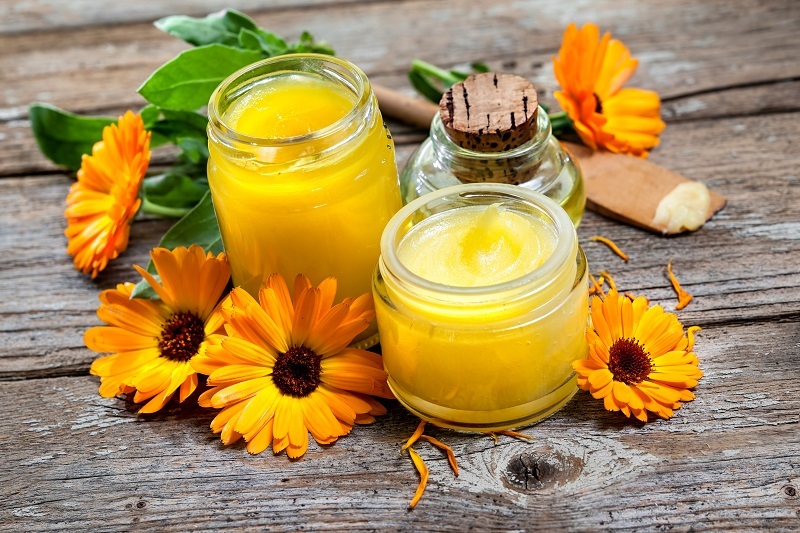The Best Practices for Hydrangea Care
Posted on 23/08/2025
The Best Practices for Hydrangea Care
Hydrangeas captivate gardeners and flower enthusiasts alike with their lush blooms, spectacular color variations and impressive ability to transform any garden into an oasis of vibrant beauty. Whether your hydrangeas boast lush blue, pink, or white flowers, mastering the best care practices will reward you with healthy shrubs and abundant blooms season after season. This comprehensive guide explores the top methods and techniques for growing hydrangeas successfully, incorporating expert advice on soil, sunlight, pruning, watering, fertilization, winter protection, pest management, and more.

Understanding Hydrangea Varieties: The Foundation of Excellent Care
Before delving into the specifics of hydrangea care, it's essential to become familiar with the different types because each requires slightly different attention. The main hydrangea varieties include:
- Hydrangea macrophylla (Bigleaf Hydrangea): Known for mophead and lacecap blooms. Famous for color-changing abilities based on soil pH.
- Hydrangea paniculata (Panicle Hydrangea): Features cone-shaped blooms, such as 'Limelight' and 'Pinky Winky'.
- Hydrangea arborescens (Smooth Hydrangea): Includes 'Annabelle' type hydrangeas with massive white flowers.
- Hydrangea quercifolia (Oakleaf Hydrangea): Recognizable by unique oak-shaped leaves and white-to-pink blooms in summer.
- Hydrangea serrata (Mountain Hydrangea): Great for smaller spaces and can also change color according to soil pH.
Knowing your hydrangea type enables you to tailor your care routine for optimal growth and flowering.
Choosing the Right Location for Hydrangeas
Hydrangeas thrive when planted in the ideal spot. Consider the following when selecting a location:
- Light: Most hydrangeas perform best in partial sunlight. Aim for morning sun and afternoon shade, especially in hotter climates.
- Shelter: Shield them from strong winds and extreme sun exposure, which can scorch leaves and reduce bloom vitality.
- Space: Give your hydrangeas room to spread. Crowding can reduce air circulation and increase disease risk.
Tip: Hydrangea paniculata are more sun-tolerant, while bigleaf and oakleaf hydrangeas prefer more shade. Adapting to your hydrangea's needs is crucial for robust growth.
The Importance of Soil Preparation
Soil quality is one of the most vital aspects of successful hydrangea care. To ensure your hydrangeas thrive:
- Rich, well-drained soil: Hydrangeas despise soggy conditions, so make sure the planting site drains well. Amend clay or compacted soils with compost, peat, or aged manure.
- pH Level: For bigleaf hydrangeas, soil pH dictates flower color:
- Acidic soil (pH below 5.5): Yields blue flowers.
- Neutral or alkaline soil (pH 6.0+): Produces pink or even red blooms.
- Organic Matter: Regularly mix mulch or compost around the plant base to improve texture and fertility.
Planting Hydrangeas for Maximum Success
When to Plant Hydrangeas
The best time to plant hydrangeas is in the spring or fall, when temperatures are milder and moisture levels are ideal. Avoid planting during the hottest summer months, which can stress the roots.
How to Plant Hydrangeas
- Dig a generous hole: It should be at least twice as wide as the root ball.
- Set the plant: Place the hydrangea at the same depth it was in its nursery pot.
- Backfill with enriched soil: Mix in plenty of organic matter as you fill the hole.
- Water thoroughly: Give the new hydrangea a deep soak after planting.
- Mulch: Apply a 2-3 inch layer of mulch around--but not touching--the stems to retain moisture and suppress weeds.
Watering Hydrangeas: Consistency Is Key
Hydrangeas are naturally thirsty, particularly when newly planted or during dry spells. To keep your plants hydrated and happy:
- Consistent moisture: Water deeply 1-2 times per week to soak the entire root system. Avoid frequent shallow watering.
- Morning watering: Moisture on the leaves in hot sun can lead to leaf burn. Water early for best results.
- Mulch is your friend: It slows evaporation and helps the soil retain moisture.
- Check soil before watering: If the top inch of soil feels dry, it's time to water again.
Tip: Container-grown hydrangeas dry out more quickly--monitor them frequently during hot weather.
Fertilizing Hydrangeas: Feeding for Flourishing Blooms
For healthy foliage and abundant flowers, hydrangeas benefit from routine feeding:
- Timing: Fertilize twice per year--spring and early summer are optimal.
- Type: Use a balanced, slow-release granular fertilizer or one designed for flowering shrubs.
- Application: Distribute fertilizer evenly around the drip line, away from direct contact with the stems.
- Adjust for pH: For blue blooms on bigleaf hydrangeas, supplement with aluminum sulfate; for pinks, add garden lime and phosphorous.
Warning: Over-fertilizing encourages leafy growth at the expense of flowers. Less can be more!
Pruning Hydrangeas: When and How to Do It Right
Best practices for hydrangea pruning depend on the variety. Here's a guide for each:
- Bigleaf & oakleaf hydrangeas: Flower buds form on old (last year's) wood and should only be pruned right after flowering, typically in late summer. Prune only to remove dead stems or to shape the plant.
- Panicle & smooth hydrangeas: These varieties bloom on new wood and can be pruned in late winter or early spring before new growth appears. Cut back up to one-third for more vigorous blooming.
- General tips: Always use sharp, clean pruning tools to prevent disease spread. Remove deadwood every spring, regardless of type.
Proper pruning invigorates your hydrangea, encourages lush blooms, and enhances overall plant health.
Winter Protection for Hydrangeas
Winter can be challenging for hydrangeas, especially in colder regions. Use these protection strategies:
- Mulch heavily: In late fall, add an extra-thick blanket of mulch around the base for root insulation.
- Burlap wraps: Protect tall, tender varieties with burlap or frost blankets if your winter temperatures dip below freezing.
- Water before freeze: Give your plants a good soak in late autumn; hydrated stems and roots resist winter damage better.
With proper winter care, your hydrangeas will bounce back beautifully as temperatures rise.
Controlling Weeds and Pests around Hydrangeas
Maintaining a clean, healthy planting area is crucial for vibrant hydrangea growth. Here's how to keep weeds and pests in check:
- Mulch against weeds: A thick mulch layer smothers competing weeds and retains soil moisture.
- Hand removal: Pull weeds promptly to prevent competition for nutrients.
- Monitor for pests: Check regularly for aphids, spider mites, and slugs. Use insecticidal soap (for aphids and mites), and slug bait (for slugs and snails) as needed.
- Disease prevention: Remove fallen leaves; space plants adequately for good air circulation and avoid wetting foliage during watering.
Healthy hydrangeas are naturally resilient, but early intervention is the best defense against pests and diseases.
Changing Hydrangea Flower Color: A Unique Garden Trick
One of the most exciting aspects of bigleaf hydrangea care is the ability to alter flower color by controlling soil chemistry:
-
To turn hydrangea flowers blue:
- Add aluminum sulfate to the soil.
- Maintain acidic pH (5.0-5.5).
-
To turn flowers pink:
- Apply garden lime to raise soil pH above 6.0.
- Increase phosphorous content to inhibit aluminum uptake.
Note: White hydrangea varieties typically do not change color with soil pH.
Hydrangea Care Throughout the Year: A Seasonal Guide
Spring
- Remove winter mulch and prune as needed (by variety).
- Apply balanced fertilizers and check for winter damage.
- Monitor for early-season pests and diseases.
Summer
- Water deeply during hot, dry spells.
- Mulch to retain moisture and suppress weeds.
- Deadhead spent blooms to encourage new flowers.
Fall
- Decrease fertilizing--avoid late feeding, which can encourage tender new growth before frost.
- Add extra mulch for winter protection.
- Prune bigleaf and oakleaf hydrangeas shortly after flowering if needed.
Winter
- Keep roots insulated with a thick mulch layer.
- Protect vulnerable varieties with covers or wraps during freezing weather.
Common Hydrangea Problems and Solutions
Even with the best hydrangea care practices, you may encounter a few issues:
- No blooms: Often caused by improper pruning, too much shade, or late spring frosts damaging old wood.
- Wilting leaves: Indicates underwatering or root rot (from overwatering).
- Brown-edged leaves: Usually a sign of too much fertilizer or sunburn.
- Powdery mildew: Improve air circulation and use fungicides if necessary.
Identifying issues early and correcting conditions will restore health and beauty to your hydrangeas.

Best Tips for Gorgeous Hydrangea Blooms
- Choose the right hydrangea type for your climate and garden conditions.
- Prioritize soil preparation and ongoing amendments for long-term plant health.
- Regularly monitor soil moisture and water at the base of the plant.
- Fertilize appropriately based on bloom and growth cycles.
- Prune according to variety to ensure vigorous flowering each season.
- Adjust soil pH for the desired flower color if growing bigleaf hydrangeas.
- Provide winter protection in zones with harsh cold.
Hydrangeas will reward your thoughtful care with spectacular color and lush growth year after year!
Conclusion: Enjoy a Flourishing Hydrangea Garden
With their dramatic color displays and abundant blossoms, hydrangeas are among the most cherished garden shrubs around the world. By following these best practices for hydrangea care--from choosing the right location and preparing the soil to proper watering, fertilizing, pruning, and seasonal attention--you can ensure that your plants stay healthy, resilient, and spectacularly beautiful. Remember, each hydrangea variety has its own preferences, so pay close attention to your plant's specific needs for optimal results. With patience, observation, and the methods outlined above, you'll enjoy stunning hydrangea blooms that delight and inspire all who visit your garden.
Latest Posts
The Best Practices for Hydrangea Care
Unraveling the Symbolism of Your Birth Flower and Its Messages
Explore which bloom resonates with your vibrant spirit
Prolonging the Beauty of Poinsettias
Journey through the significance of birth month flowers and their meanings






